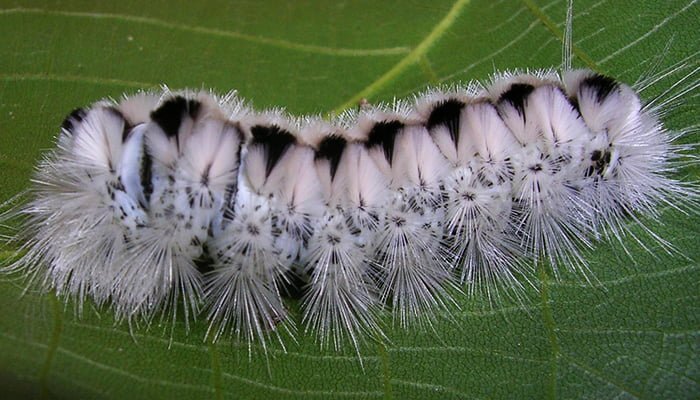If you have seen a black and white caterpillar in your yard, specifically on the leaves of your hickory, walnut, ash, elm, or oak trees it is important to not touch it. This black and white caterpillar is called the Hickory Tussock Moth Caterpillar. This species originates from Canada and can cause severe allergic reactions. They are most active in the months between June and September and have been spotted in Dutchess County and East Fishkill this year.
This white caterpillar has hairs with black-tipped bristles that contain an irritating substance that can lead to itchiness or an allergic reaction. These white hairs are the caterpillars defense mechanism. In most cases, if the substance imbeds in your skin, washing the affected area, applying calamine lotion, and icing the areas should do the trick. However, in some cases, the poison can cause a more severe reaction, including swelling and nausea.
Aside from potentially causing irritations or reactions to you family and/or pets, as mentioned above, the Hickory Tussock Moth Caterpillar feasts on the leaves of hickory, walnut, elm, ash, and oak trees. This type of feeding can result in some defoliation and minor damages to your trees.
In most cases, when dealing with pests, an IPM (Integrated Pest Management) approach is taken. IPM plans typically only involve treatment when necessary. If a pest is overall not causing much damage or cause for alarm, we will not treat the area to kill the pest. However, if the pest is extremely destructive (like the Gypsy Moth Caterpillar) and/or there is an infestation, the affected area will be treated with the appropriate management and elimination method.
Our IPM plant health care approach begins with proactively maintaining plant health care and creating the optimal conditions for your trees to survive and thrive. Periodic inspections are also important to help maintain the overall health of your plants, and to spot any sort of pests or infestations early and treat them, before they become unfixable.
Overall, the Hickory Tussock Moth Caterpillar is not extremely destructive to the trees in your yard, but it is something to be aware of since they have been spotted locally. More importantly, it is imperative to avoid bare skin contact with the caterpillar to avoid irritation and potential severe allergic reactions.
If you do spot several caterpillars in your trees and/or on your yard, it may be wise to have a professional come out to inspect the area as a precaution. Contact Red Cedar today for a free consultation on all your tree service, pest management, landscape design, and plant health care needs!


